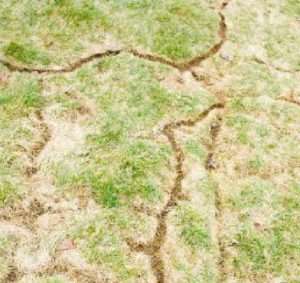Vole Control Tips to Maintain Your Yard and Gardens
Vole Control Tips to Maintain Your Yard and Gardens
Blog Article
Understanding Vole Parasite Control: Comprehensive Insights on Invasion Prevention and Treatment Techniques
By identifying the refined signs of vole invasion early on, we can take positive procedures to avoid extensive damage. In this discussion, we will certainly discover the nuances of vole behavior, dig right into the recognition of invasion indications, and uncover the most efficient avoidance and treatment methods.
Recognizing Vole Behavior
Checking out the foraging patterns of voles provides important understandings right into their habits and environment choices. Voles, little rats resembling computer mice, are herbivores recognized for their below ground tunneling activities. By observing their foraging behavior, scientists can obtain a far better understanding of where voles like to develop their environments and the extent of their ecological influence. Voles are respected breeders, with a single female efficient in creating numerous litters in a year, making it critical to comprehend their actions for reliable insect control techniques.
Research study suggests that voles display selective feeding practices, preferring roots, seeds, and roots. This dietary choice influences their foraging patterns, leading them to areas abundant in greenery and ground cover. In addition, voles are understood to develop sophisticated passage systems for foraging and nesting objectives, suggesting a high degree of adaptability to their environments.
Comprehending vole habits is essential for executing targeted parasite control steps that interrupt their habitat preferences and foraging tasks (vole yard damage). By examining their behavior, professionals can develop extra effective prevention and therapy approaches to take care of vole problems

Identifying Indicators of Vole Problem
Vole infestations can be found by identifying details indications of their existence in a location. One of one of the most common signs of a vole invasion is the visibility of surface area runways. Voles produce networks of narrow paths on the ground that are commonly around 2 inches vast. These paths are commonly discovered in verdant locations or underneath mulch or ground cover where voles can relocate openly and look for food.
An additional key sign of vole invasion is the presence of small burrow openings in the ground. In addition, voles are recognized to leave behind chewed plant stems, origins, and light bulbs near their burrow openings, indicating their feeding task in the area.
Finding these droppings along runways or near burrow openings can validate a vole problem. By being attentive for these indications, home proprietors can without delay resolve vole infestations and stop additional damage.
Executing Positive Prevention Measures

In addition, utilizing all-natural vole deterrents like castor oil-based repellents or predator pee can function as effective safety nets. It is also suggested to on a regular basis inspect outdoor areas for any kind of indications of vole activity, such as paths or delve openings, to deal with potential Extra resources problems immediately. vole yard damage. By adopting these aggressive prevention strategies, building owners can substantially minimize the probability of vole damages and preserve the health and wellness and aesthetic appeals of their landscapes
Efficient Treatment Strategies
Integrating targeted trapping techniques and using accepted rodenticides are necessary components of effective therapy strategies for handling vole infestations. Normal surveillance and maintenance are likewise essential facets of effective therapy approaches to make sure that vole populations are kept under control. By integrating capturing, rodenticides, habitat adjustment, and consistent surveillance, reliable vole pest control can be best site accomplished.
Tracking and Upkeep Tips
Keeping an organized routine for surveillance and performing regular maintenance activities is crucial to maintain the performance of vole parasite control procedures. Routine monitoring enables the very early detection of vole activity, allowing prompt treatment prior to infestations get worse. To efficiently check vole populations, tactically placed catches can be used in vole runways or near burrow entrances. By consistently inspecting these traps, homeowner can evaluate the degree of vole task and change control methods as necessary.
In addition, preserving a clean and clean landscape is vital in vole avoidance. Clearing away particles, such as stacks of timber or dense vegetation, removes prospective vole environments. On a regular basis mowing grass and trimming greenery helps in reducing vole concealing spots and decreases their access to food sources.
Moreover, recurring maintenance of physical obstacles, such as fencings or wire mesh, is crucial to avoid vole intrusion. Examining and fixing any damages to these Web Site structures guarantees that vole control stays reliable in securing residential properties from invasions. By including these tracking and maintenance methods right into a thorough vole parasite control plan, individuals can properly handle vole populaces and shield their residential or commercial properties from damage.
Conclusion
Finally, understanding vole parasite control calls for a solid understanding of vole behavior, the capability to determine signs of invasion, implementing proactive avoidance procedures, efficient treatment strategies, and constant surveillance and maintenance. By taking an extensive approach to vole control, people can efficiently manage and protect against problems, eventually safeguarding their residential property and surrounding setting from damage triggered by these tiny rats.
In this discussion, we will discover the subtleties of vole habits, dive right into the recognition of infestation indicators, and uncover the most effective avoidance and therapy approaches.Incorporating targeted trapping methods and making use of authorized rodenticides are crucial parts of efficient therapy approaches for taking care of vole invasions. To successfully check vole populations, tactically placed traps can be used in vole runways or near burrow entryways. Inspecting and repairing any type of damages to these structures makes sure that vole control continues to be effective in protecting properties from problems. By including these tracking and maintenance techniques into a thorough vole insect control plan, individuals can efficiently manage vole populations and safeguard their homes from damage.
Report this page